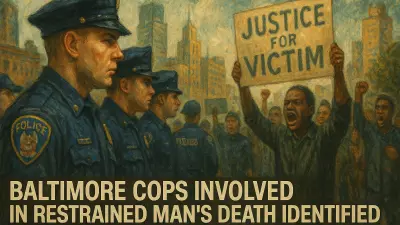A little more than 15 years ago, I made a minor name for myself as a Pittsburgh observer by publishing a newspaper column that argued, bluntly, that the Allegheny Conference on Community Development had outlasted its usefulness to the region and should withdraw from the stage.

I wrote that the Conference should accept appropriate gratitude for its historical contributions but should cede the region to modern forward-looking, more entrepreneurially-minded leadership. That hasn’t happened, of course. It’s strange to imagine that incumbent regional pooh-bahs would relinquish their status voluntarily.
I persist with the point today because my theme, expressed inartfully back then, is more urgent than ever. For Pittsburgh and other post-industrial regions, governance matters. If Pittsburgh hopes to build a more equitable, sustainable, and prosperous future for itself, Pittsburgh has the wrong governance in place.
For Pittsburgh and other post-industrial regions, governance matters. If Pittsburgh hopes to build a more equitable, sustainable, and prosperous future for itself, Pittsburgh has the wrong governance in place.
The Conference was formed in the mid-1940s as a national model of public/private cooperation to advance economic development and regional renewal. It was massively successful in many respects; its accomplishments are visible all over the region, from the towers and parks of Downtown Pittsburgh to regional health and water systems to Pittsburgh’s relatively clean skies. Even today the Conference, with its partner organizations, remains perhaps the single most influential organization of its kind in the region, consolidating and expressing money, membership, and public policy goals associated with Pittsburgh’s largest corporations and not-for-profit organizations.
Critical to that role is the fact that the Conference embodies Pittsburgh’s longstanding values of “business first” and “business more than anything.”
Those principles predate the Conference itself, but the organization long has stood for them particularly clearly.
I don’t want to pick on the Conference as such, and I certainly have no quarrel with the committed individuals who work there and elsewhere in projects focused on Pittsburgh’s success.
But even during the 20th century, that business-first mentality was never best for Pittsburgh as a whole. More important, it’s a particularly poor fit for post-industrial Pittsburgh. Pittsburgh’s business-first mentality gave the region a 20th century governance structure that was effective enough in its time — mostly — but that has outlived its usefulness. Critical new times call for massive rethinking. Governance neither begins nor ends with the people at the top, but leadership, of course, matters a lot. Today, who should be in leadership, how should leadership be organized, and what values head the list as governance moves ahead with Pittsburgh’s post-industrial future?
Critical new times call for massive rethinking. Governance neither begins nor ends with the people at the top, but leadership, of course, matters a lot.
Governance is a dry subject, even to experts. I know that from personal experience; studying governance is pretty much all I do. Governance focuses on the systems that groups of people use to cooperate and resolve conflicts so that they get along, despite individual differences. They may use law and other formal rules (elections, councils, boards, courts) and also informal customs and social norms. Real estate tax systems, school taxes, and land use planning policies are parts of Pittsburgh’s formal governance, linked in part to governance at the state level.
Pittsburgh’s iconic Terrible Towel and love of parking chairs and all things black-and-gold are parts of informal systems of social norms that help Pittsburghers identify as a single community, most of the time.
Good governance is to a region like spinach was to Popeye: it generates power, strength, resilience, and courage. Bad governance is like Kryptonite to Superman. And today, Pittsburgh is in the throes of bad governance.
To see why, consider the following complaints: Pittsburgh is too fragmented. There are so many official neighborhoods in the City of Pittsburgh and so many boroughs, townships, school districts, and other government authorities across Allegheny County and Western Pennsylvania that public policy is continually dis-coordinated and moves at a snail’s pace.
There are so many philanthropies and nonprofits that it can be difficult to figure out where the money and services are and how to get them to the people who need them. There are so many players in the economic development sector that we don’t know for sure who is responsible for what.
That’s a summary of Pittsburgh circa 100 years ago. Yes: just about all of the complaints that we hear about Pittsburgh today were circulating with equal force — perhaps even more force — around the turn of the 20th century. What’s more, then as now, even though evidence showed that many Pittsburghers experienced terrible living conditions and quality of life, the primary takeaway from the fragmentation diagnosis was that fragmentation was bad for business. In other words, Pittsburgh’s business-first attitude has been leading governance and “reform” efforts for a long, long time.
A century ago, the solution was better governance, through a lot of consolidation and coordination. Not as much as proponents wanted (Pittsburgh’s annexation of Allegheny City in 1907 was the last big hurrah for plans to consolidate local communities), but enough to help the region’s governance catch up to and look a lot like the region’s industry: integrated and centralized in the hands of a small number of business and government elites. The ACCD was the capstone of the consolidation project, formally putting top leaders of Pittsburgh industry at the policy and planning table with the leaders of Pittsburgh government. No American city combined formal government and business interests as thoroughly and as effectively as Pittsburgh did.
We know what happened next. Pittsburgh’s air was cleared. Pittsburgh’s water was cleaned. Pittsburgh’s Downtown and nearby neighborhoods were fitted with business-friendly buildings and parks.
Also, Pittsburgh’s steel industry collapsed. Pittsburgh’s air remains sooty, even today. And the quality of life in many of Pittsburgh’s neighborhoods and boroughs is deeply inequitable and unhealthy, despite Pittsburgh’s pride in its good “livability” ratings.
Postindustrial Pittsburgh should build governance from the ground up that puts equity, inclusion, and sustainability at the top of the agenda and puts their advocates at their rightful places at the governance table.
Fragmentation, in other words, wasn’t the cause of Pittsburgh’s problems, and centralizing governance in an elite class wasn’t the solution.
The cause was and remains a tight alignment of governance systems with business interests, especially consolidated, integrated, and centralized business interests, that has done as much harm as good for the region.
The cure is to loosen that alignment, to imagine ways to put business goals in their place — meaning, business that welcomes investment in small and entrepreneurial businesses, not only giants along the lines of 20th century industry.
Postindustrial Pittsburgh should build governance from the ground up that puts equity, inclusion, and sustainability at the top of the agenda and puts their advocates at their rightful places at the governance table.







